
BlackBerry Priv
270 EUR
Experience top-of-the-line features with the BlackBerry Priv - a powerful device boasting a 5.4 inch curved edge screen, 18MP camera, and impressive battery life. Upgrade your mobile game now. #BlackBerryPriv #MobileTech
Smartphone Specifications and Features Summary:
Announced: 2015, October. Released 2015, November
Status: Discontinued
Display: 5.4 inches AMOLED with Corning Gorilla Glass 4
Curved edge screen
OS: Android 5.1.1 (Lollipop)
Network: GSM / HSPA / LTE
Chipset: Qualcomm MSM8992 Snapdragon 808
CPU: Hexa-core
GPU: Adreno 418
Memory: 32GB 3GB RAM
Battery: Li-Ion 3410 mAh
Available color(s): Black
BlackBerry Priv: Bringing the Best of Both Worlds with Its Unique Features
In the ever-evolving world of smartphones, manufacturers constantly strive to outdo each other by introducing new features and innovative designs. However, one company that has always stood out for its distinct approach to mobile technology is BlackBerry. With its emphasis on security and productivity, BlackBerry has maintained a loyal fan base over the years. But with the rise of Android and iOS, BlackBerry faced tough competition and had to adapt to the changing market demands.In 2015, BlackBerry launched its first-ever Android device - the BlackBerry Priv. It was a bold move that shook the tech world and left many wondering what BlackBerry had in store for its users. Well, it turns out that the Priv was a clever blend of BlackBerry's signature features, such as a physical keyboard, and the popular Android operating system.
Launched in October of 2015 and released in November of the same year, the BlackBerry Priv may not be a recent release, but it's definitely worth revisiting. So, let's take a trip down memory lane and explore the features that made the BlackBerry Priv a unique and impressive smartphone.
Design
The BlackBerry Priv had a sleek and modern design with a premium feel. It featured a glass front with Corning Gorilla Glass 4 protection and a curved edge screen, giving it a unique look. The back and frame were made of plastic, which may not have been the most luxurious material, but it did provide a sturdy build. The Priv also had a comfortable weight of 192g, making it easy to hold and use.
One of the highlights of the Priv's design was its physical keyboard. While most smartphones had switched to on-screen keyboards, BlackBerry stayed true to its roots and included a QWERTY keyboard. The keyboard was well-spaced, responsive, and provided a great typing experience. But for those who preferred a virtual keyboard, the Priv also had a touch-sensitive keyboard, giving users the best of both worlds.
Display
The Priv's display was another standout feature. It had a 5.4-inch AMOLED screen with a resolution of 1440 x 2560 pixels and a 16:9 aspect ratio, offering sharp and vibrant visuals. The screen was also protected by Corning Gorilla Glass 4, making it scratch-resistant. The curved display added to the phone's sleek design and provided an immersive viewing experience.
Platform and Performance
The BlackBerry Priv ran on Android 5.1.1 (Lollipop), which was upgradeable to 6.0.1 (Marshmallow). It was a strategic move by BlackBerry to incorporate the widely popular Android operating system, giving users access to a vast range of apps from the Google Play Store.
Under the hood, the Priv was powered by a Qualcomm Snapdragon 808 chipset and a Hexa-core processor with four Cortex-A53 cores clocked at 1.4 GHz and two Cortex-A57 cores clocked at 1.8 GHz. This combination provided smooth and speedy performance, allowing users to multitask and run demanding apps with ease. The Adreno 418 GPU delivered excellent graphics for gaming and multimedia.
Memory and Storage
The Priv had 3GB of RAM and 32GB of internal storage, which could be expanded through the dedicated microSDXC slot. The eMMC 5.0 technology ensured fast read and write speeds, making the phone responsive and quick.
Camera
One of the most impressive features of the Priv was its 18 MP primary camera. It had an f/2.2 aperture and was equipped with Schneider-Kreuznach optics, PDAF, and OIS for fast and accurate focusing. The dual-LED dual-tone flash provided excellent lighting for low-light photography. The camera also had several features, including HDR, panorama, and the ability to shoot videos in 4K resolution at 30fps and 1080p at 60fps.
On the front, the Priv had a 2 MP selfie camera that could record videos in 720p resolution. While it may not have been the best front-facing camera in the market, it did the job for video calls and selfies.
Battery Life
The Priv had a non-removable Li-Ion 3410 mAh battery that provided impressive battery life. With up to 24 hours of talk time on 3G and up to 73 hours of music play, the Priv could get you through a full day and then some. It also had fast-charging capabilities with 18W wired and wireless charging options.
Network and Connectivity
The Priv supported GSM, HSPA, and LTE technologies for cellular network connectivity. Users could expect fast internet speeds with HSPA at 42.2/5.76 Mbps and LTE-A at 450/50 Mbps. The phone also had Wi-Fi 802.11 a/b/g/n/ac, Bluetooth 4.1, GPS, GLONASS, NFC, and a microUSB 2.0 port.
Sensors and Miscellaneous Features
The Priv had various sensors, including an accelerometer, altimeter, gyro, ToF proximity, and a compass. These sensors enabled features like gesture control and BlackBerry's renowned security features.
The Priv was available in black and came in models STV100-4, STV100-3, STV100-1, V100, and STV100-2. It was priced at around 270 EUR, making it an affordable choice for users.
Sadly, the Priv was eventually discontinued, but its legacy lived on through other BlackBerry Android devices like the KEYone and KEY2.
In conclusion, the BlackBerry Priv was a unique and promising smartphone that brought together the best of BlackBerry and Android. It offered a great display, impressive performance, excellent camera, and the added bonus of a physical keyboard. Although it may no longer be available in the market, the Priv remains a beloved device among BlackBerry enthusiasts.
Latest BlackBerry Priv Specs and Prices
LAUNCH
- Announced: 2015, October. Released 2015, November
- Status: Discontinued
PLATFORM
- Operating System: Android 5.1.1 (Lollipop), upgradable to 6.0.1 (Marshmallow)
- Chipset: Qualcomm MSM8992 Snapdragon 808 (20 nm)
- CPU: Hexa-core (4x1.4 GHz Cortex-A53 & 2x1.8 GHz Cortex-A57)
- GPU: Adreno 418
MEMORY
- Card slot: microSDXC (dedicated slot)
- Internal: 32GB 3GB RAM - eMMC 5.0
DISPLAY
- Type: AMOLED
- Size: 5.4 inches, 81.6 cm2 (~71.9% screen-to-body ratio)
- Resolution: 1440 x 2560 pixels, 16:9 ratio (~540 ppi density)
- Protection: Corning Gorilla Glass 4 - Curved edge screen
BODY
- Dimensions: 147 x 77.2 x 9.4 mm (5.79 x 3.04 x 0.37 in)
- Weight: 192 g (6.77 oz)
- Keyboard: QWERTY
- Build: Glass front (Gorilla Glass 4), plastic back, plastic frame
- SIM: Nano-SIM - Capacitive touch 4-row BlackBerry keyboard
MAIN CAMERA
- Single: 18 MP, f/2.2, 27mm (wide), 1/2.4", PDAF, OIS
- Features: Schneider-Kreuznach optics, dual-LED dual-tone flash, HDR, panorama
- Video: 4K@30fps, 1080p@60fps
SELFIE CAMERA
- Single: 2 MP
- Video: 720p
BATTERY
- Type: Li-Ion 3410 mAh, non-removable
- Charging: 18W wired, QC2 Wireless (Qi/PMA) (market dependent)
- Stand by: Up to 420 h (3G)
- Talk time: Up to 24 h (3G)
- Music play: Up to 73 h
CELLPHONE NETWORK
- Technology: GSM / HSPA / LTE
- 2G bands: GSM 850 / 900 / 1800 / 1900
- 3G bands: HSDPA 850 / 900 / 1700(AWS) / 1900 / 2100 - - USA (STV100-1), Europe (STV100-4)
- 4G bands: 1, 2, 3, 4, 5, 7, 12, 17, 20, 29, 30 - - USA (STV100-1) - 1, 2, 3, 4, 7, 8, 13, 17, 20, 28 - - Europe (STV100-4)
- Speed: HSPA 42.2/5.76 Mbps, LTE-A (3CA) Cat9 450/50 Mbps
SOUND
- Loudspeaker : Yes
- 3.5mm jack : Yes
COMMUNICATIONS
- WLAN: Wi-Fi 802.11 a/b/g/n/ac, Wi-Fi Direct, hotspot
- Bluetooth: 4.1, A2DP, EDR, LE
- Positioning: GPS, GLONASS
- NFC: Yes
- Radio: No
- USB: microUSB 2.0 (SlimPort 4K)
FEATURES
- Sensors: Accelerometer, altimeter, gyro, ToF proximity, compass
MISCELLANEOUS
- Colors: Black
- Models: STV100-4, STV100-3, STV100-1, V100, STV100-2
- Price: About 270 EUR
Disclaimer: Specifications shown may be different from the actual product. We cannot guarantee that the information provided on this page is 100% correct. This content is provided for information purposes only. All information included herein is subject to change without notice.


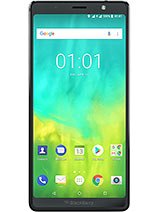
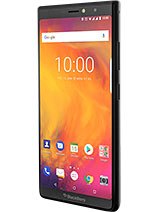
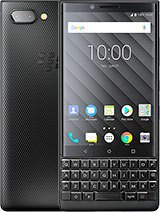
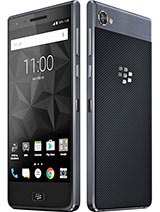
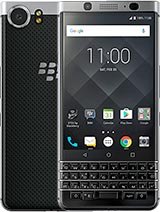

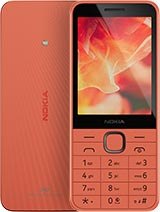


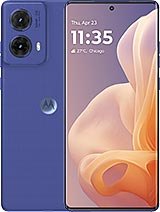

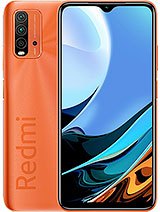





Leave your Opinion here